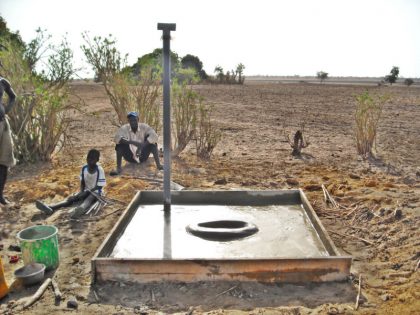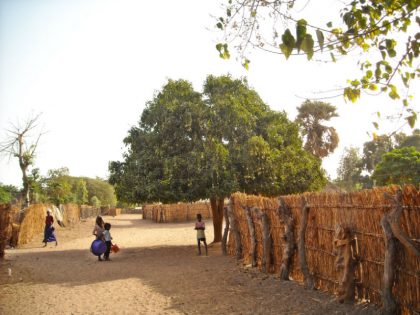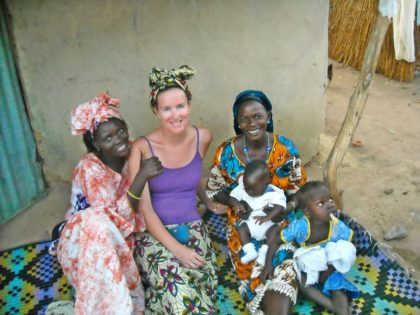 Location
Location
Keur Farba, Djilor, Fatick, Foundiougne, Senegal
Community Description
Keur Farba is located in the Rural Community of Djilor in the region of Fatick in western Senegal. The village is situated on a branch of the Sine-Saloum Delta in the Department of Foundiougne.
The name of the village chief is Wagane Sene. The 130 families that live in 66-family compounds make up the approximately 800 residents of Keur Farba.
The village is predominately Serere, with a few Pulaar families, and is 100% Muslim. Millet and peanuts make up the majority of Keur Farba’s fields, though there are also numerous vegetable gardens and mango and cashew orchards. Many families own cattle, and with its close proximity to the Sine-Saloum river, fishing is a well-utilized resource.
The Keur Farba Primary School has an enrollment of 136 students. The village is currently constructing classrooms for the school, completely funded by community contributions.
This is only one of many examples of the village’s motivation and ability to manage large-scale projects and activities on their own. Others include the Women’s Group garden and the Foret Communautaire de Djiffa (FCDD), which is a volunteer co-operative between Keur Farba and 3 other villages of the near-by protected forest known as Djiffa.
FCDD is working closely with the International Conservation of Nature (UICN) and the West African Association for Marine Environments (WAAME) in numerous environmental conservation activities and natural resource management action plans.
Currently, Keur Farba has three latrines with a cement platform and proper pipe ventilation. The lack of latrines leads to people urinating and defecating around the village, and very unsanitary conditions.
 Project Description
Project Description
This project is to build 12 simple pit latrines in the village. These latrines consist of a 2-meter hole in the ground of 1 meter in diameter, covered with a reinforced concrete platform.
Project funds will be used to purchase the supplies necessary for construction: cement, iron for supporting the cement, wood for the frames, and a pipe for ventilation.
The villagers will be providing the labor of digging the hole and building the platform, as well as providing sand and rocks to mix to make the concrete.
The design of these latrines is such that when one pit fills, the platform can simply be lifted and moved on top of a newly dug pit. One platform should be able to last upwards of 20 years.
Project Impact
Approximately 200 people will benefit from this project.
Peace Corps Volunteer Directing Project
Mary Haviland and Morgan Jessee
Comments
The people of the village will have increased access to toilet facilities, which will improve the sanitary conditions of the village and cut down on both malaria and diarrheal diseases.
Dollar Amount of Project
$500.00
Donations Collected to Date
$500.00
Dollar Amount Needed
$0.00 – This project has been fully funded, through the generosity of The Soneva SLOW LIFE Trust as a part of their Clean Water Projects initiative.
We encourage others to continue to donate using the Donate button below, and we will notify Peace Corps Volunteers Mary Haviland and Morgan Jessee of your donation. Additional funds will be used to fund the next project by Mary and Morgan and/or those other PCVs in the country of service.
This project has been completed.